Victor Mikhailovich Glushkov. Ahead of time
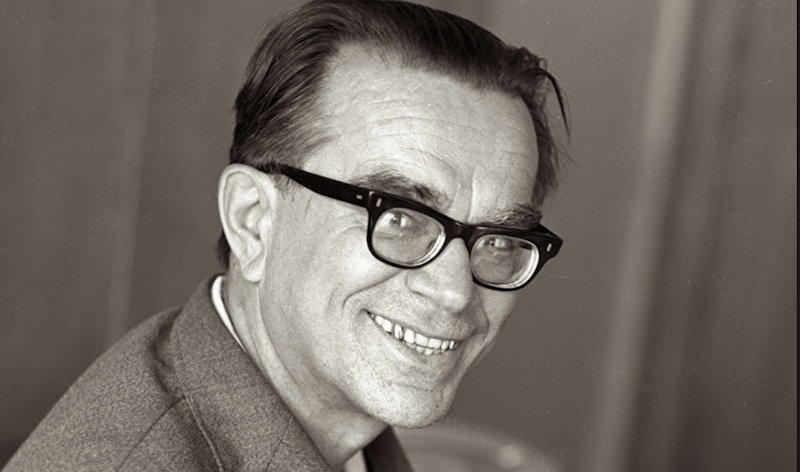
One of the most brilliant, talented and outstanding people of the 20th century, a scientist and thinker who has the right to stand next to such personalities as Einstein, Turing, “the king of Soviet cybernetics” - Victor Glushkov. Today we will talk about this great man who was an inexhaustible storehouse of ideas, the creator of scientific and technical foundations for the information industry of the USSR.
The story of his life is amazing, he was the one who stood a step away from the discovery of the World Wide Web. From under his pen came more than 800 works. The world's first "Cybernetics Encyclopedia" was prepared at the initiative of Glushkov. His talent - to look deeper and further, opened up to him an understanding of how important computer technology will play in society, he was clearly aware of the prospects and large-scale use of it. Already at that time the idea of creating artificial intelligence did not leave him. Mathematics, cybernetics, computer design, computer science ... all this can be safely connected with the name of Viktor Mikhailovich. A talented person is talented in everything!
In 1923, Viktor Mikhailovich Glushkov was born in Rostov-on-Don. Father - Glushkov Mikhail Ivanovich, a mining engineer with higher education from an old Cossack family (village of Lugansk). His ancestors were strong-willed and talented people, all this was inherited by Victor.
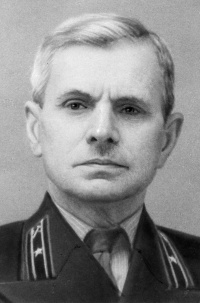
Father - Mikhail Ivanovich Glushkov
In 1928, the family moved to the largest and deepest mine in the Donbass named after Artem (the city of Shakhty) by the nature of his father’s activities. Here in the city of Shakhty (Rostov Region) he spent his childhood and graduated from high school. Parents paid a lot of attention to the education of their son, from the memoirs of Glushkov himself - his father often helped him conduct experiments in physics and chemistry, together they even designed a television set. Glushkov Sr. was an ardent amateur radio enthusiast; he made radio receivers and batteries; he also introduced his son to this business.

In the 5th grade , Viktor Shakhty was able to make a radio receiver on his own, using the popular science magazines Technique of Youth, Knowledge and Power, and, most interestingly, even devised his own schemes for this. As Glushkov recalled, it was at that time that he managed to create his first invention, an aiming device, and a flight control system for a projectile for an electric gun.
Already at a young age, Victor perceived the book not just as a tool for extracting knowledge, but read it under an already defined and set task. Glushkov adhered to this principle throughout his life.
Книга — была неотьемлемой частью жизни семьи Глушковых, до войны в доме размещалась настоящая библиотека, уже в четыре года он умел читать, его захватывали романы Жюль Верна, он увлекался биологией, минералогией, книги Брема немецкого ученого-зоолога и путешественника, («Brehms Tierleben») были не только им прочитаны, но и казалось выучены наизусть).
Читать научился очень рано. Моя бабушка по отцу, Ефимия Петровна, когда ждала рождения внука, научилась грамоте и читала мне книжки. Отец рисовал для меня картинки со стихами. По-видимому, тогда я и научился читать. Перед школой я уже прочитал Уэлса, Жюль-Верна и другую научно-фантастическую литературу, но все-таки ярко выраженных наклонностей в тот период у меня не было.
While still at school, Glushkov independently began to study astronomy, mathematics, physics, chemistry and knew these subjects at the university program level, an incredible number of poems, poems and not only in Russian were easily recited by Victor. In the tenth grade, Glushkov recited verses for 10 hours in a row. Goethe was his favorite poet, and the legend of Faust, with its deep philosophy and Faust’s desire to know the world, was his favorite work and hero, respectively: “I liked Faust extraordinarily because its image reveals the romance of knowledge, which for me was then the most important ". But such a passion for reading at an early age impaired Victor's vision, he suffered from myopia until the end of his life. He was a physically rather underdeveloped child, but this Victor decided to correct,
Being in the sixth grade, the future scientist, having decided that there was not enough mathematical knowledge for his assigned tasks, began to study the textbook on differential calculus and Privalov's “Analytical Geometry”; algebra, geometry, trigonometry - until the eighth grade, he calmly solved all the examples from Guenther and Kuzmin’s problem book, which were designed not even for schoolchildren, but for university students.
Mother, Vera Lvovna Glushkova, worked as an accountant, devoted a lot of time and attention to her only son, whom she loved immeasurably. Alas, a tragic fate befell this wonderful woman: during the Second World War she was executed by the Nazis, and together with other members of the anti-fascist underground, she was thrown into the mine.

Mother - Vera Lvovna Glushkova
During the war, she was a deputy of the Shakhty City Council, she was extradited by the manager, who was German. It was a terrible time, in just a couple of months the Nazis managed to shoot three and a half thousand people. The death of his mother was a big blow for Victor, every time he came to his hometown of Shakhty, he went to the memorial, laid flowers, thereby recalling the great feat of his mother, a memory of which he sacredly honored. Father after the death of his mother married another woman who already had two children, estranged himself from Victor, at the end of his life he worked as the director of a technical school in the city of Shakhty. Although Glushkov Jr. did not forget his father and helped him financially, despite the fact that they saw each other very rarely.
Of course, with such a thirst for science, Glushkov was an excellent pupil at school, receiving the highest score for his work.
As a child, he was interested in astronomy, but due to poor vision (-12), this hobby remained in his childhood. It seemed that Victor wanted to know everything, even was interested in hypnosis. He managed to make a model of a tram controlled by a short-wave transmitter, later a searchlight and a home telephone, and he made a magnifier for the Photocor camera.
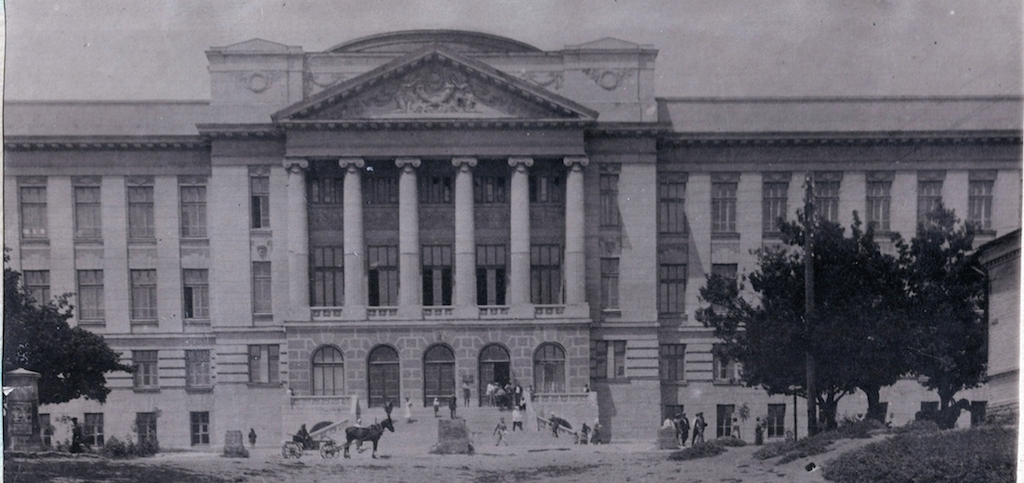
Novocherkassk Industrial Institute 1936
В 1941 закончил школу с золотой медалью. Его мечтой было стать физиком-теоретиком. А потом началась Великая Отечественная… о которой Виктор услышал из собранного своими же руками радиоприемника. Его обучение в Новочеркасском индустриальном институте на теплотехническом факультете было отложено, поступил он сюда лишь в 1944 году (успешно окончил в 1948 году), а обучение в Московском государственном университете, как пережившему оккупацию, было запрещено: «Лишь в декабре мне выдали паспорт в военкомате. Вначале я решил поехать в Москву. Однако, приехав туда, я понял, что это безнадежное дело — приезжих в университет не брали. Пришлось возвратиться». Во время войны Виктор подавал заявление в артучилище, но его не взяли. Виктор поступил на заочную форму обучения на математический факультет в Ростовском университете.
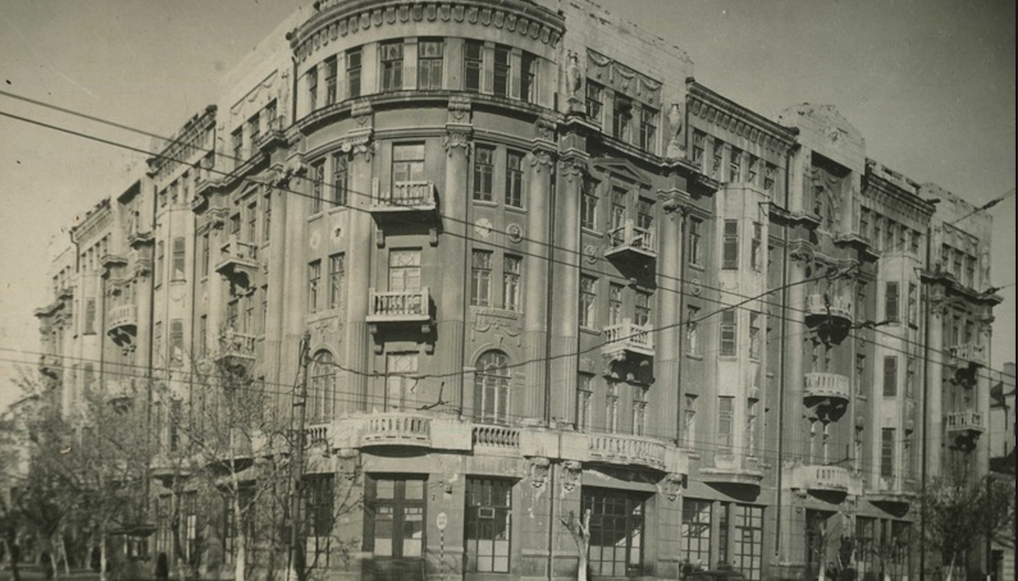
The main building of Rostov State University
In parallel with his studies, he worked to provide himself with housing and food. He graduated from the university in just a year, and it was at that moment that he became interested in such an abstract area of mathematics as topological algebra! and he was the first to solve the generalized fifth Hilbert problem. In his thesis, Glushkov developed methods for calculating tables of improper integrals, discovering inaccuracies in existing tables that had survived to 10-12 editions before. At that time, the nuclear industry was only in its infancy, and Victor, as a young specialist, was sent to the Urals.
While still in his third year at an industrial institute, Glushkov met his future wife, she studied at the Faculty of Energy.

Soon they got married, for Vali (wife) Glushkov became the measure of everything. They went to the Urals together, Glushkov got a job as an assistant at the Forestry Engineering Institute for three-quarters of the bid. His wife got a job at Sverdlovenergo. Glushkov's wife was a green-eyed beauty, an intelligent, educated and energetic woman. She solved all domestic problems, thereby giving Viktor an opportunity to fully engage in science. Working in Sverdloenergo, Valentina made good money; she had at her disposal a company car with a driver. When Glushkov was offered a job in Kiev, this strong woman gave up her career, devoting herself to her husband and raising children, worked as a teacher at the Kiev Institute of Food Industry. She provided invaluable support to Glushkov, their love was carried through the years,
A year later, Victor was already working as a senior teacher. By the beginning of 1951, Glushkov completed work on his dissertation, “Theory of locally torsion-free nilpotent groups with the condition that some chains of a subgroup break”. In the same year he was awarded the degree of candidate of physical and mathematical sciences, he was appointed assistant professor. Work began on a doctoral dissertation.
As mentioned earlier, he became interested in the World Mathematical Congress of 1900, at which the mathematician Hilbert posed 23 of the most difficult problems in mathematics, the solution of each of which became just a sensation. After painstaking brain work, Glushkov solved the generalized fifth problem of Hilbert, after which he became a recognized young scientist, one of the first mathematicians of the USSR of that time. But, at that moment, he was already seriously carried away by cybernetics and computer technology, which became his passion for his whole life.
"... an idea occurred to me that allowed me to justify the solution to Hilbert’s generalized problem ... I wrote everything down and then worked on it for another six months. It turned out to be 60 pages. Moreover, it was just a proof of one theorem. This work brought me fame among mathematicians and a sense of creativity or something happiness. "
After defending his doctoral dissertation in March 1955, Glushkov was invited to Kiev, where Glushkov soon became head of the laboratory of computer technology at the Institute of Mathematics (the first laboratory in computer technology in continental Europe). Since 1956, he taught higher algebra, a special course on the theory of digital automata at KSU at the Faculty of Mechanics and Mathematics. In December 1957, the Computing Center of the Academy of Sciences of the Ukrainian SSR was created on the basis of the laboratory, and Glushkov became the director. In December 1962, Glushkov headed the Institute of Cybernetics of the Academy of Sciences of the Ukrainian SSR.
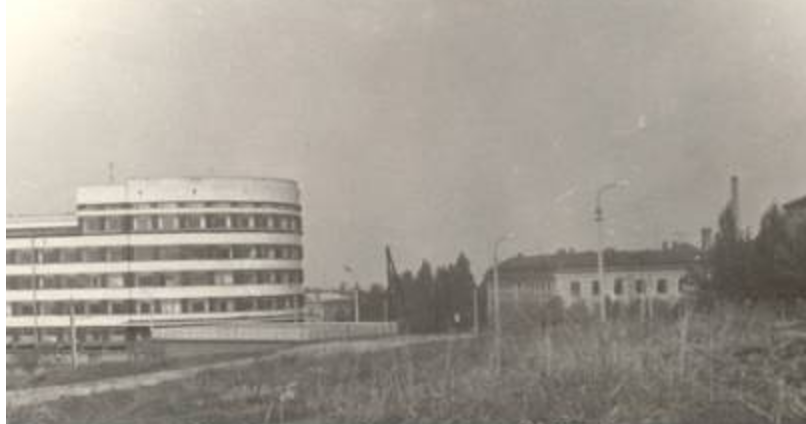
Since 1956 he also taught at KSU, where he taught at the Faculty of Mechanics and Mathematics a course in higher algebra and a special course on the theory of digital automata.
In 1956, already at that time at the Kiev Institute of Mathematics of the Academy of Sciences of the Ukrainian SSR, preparations began for the creation of a new electronic computer, later it was given the name “Kiev”, which would be intended to control technological processes. Initially, the development was carried out under the guidance of Gnedenko, but at the final stages it was transferred to Glushkov, he participated in the assembly, commissioning of the machine.
In 1960, with the help of a computer, experiments were first made in the world for the control of technological processes at a distance using telegraph communication lines.
The Kyiv computer was supposed to become a kind of know-how in the computer technology of the USSR: to have asynchronous control, a ferrite OD, input-output of numbers in the decimal number system, external memory on magnetic drums, and a developed system of operations.
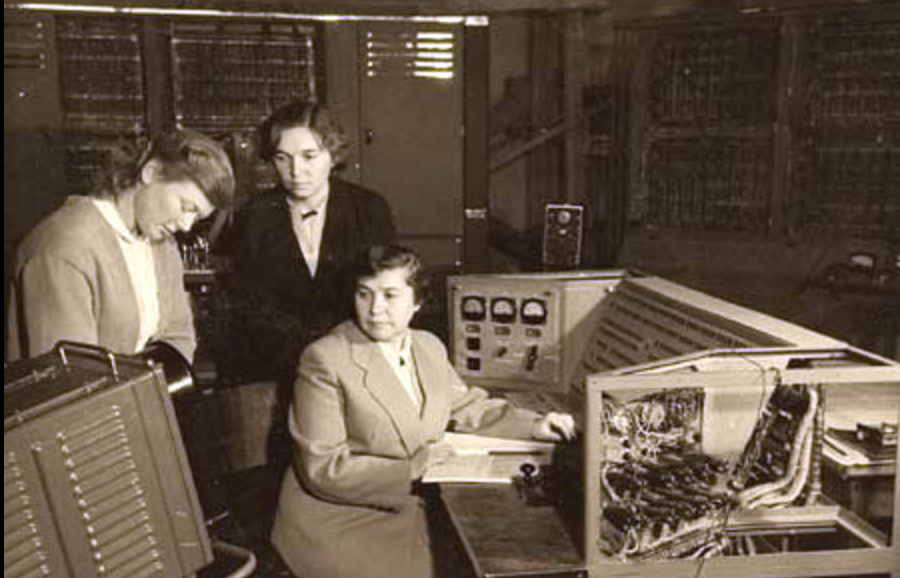
Computer "Kiev"
The computer was characterized by a three-address command structure and a binary number system, the speed was 10,000 operations per second. Data was entered using punched tapes, punched cards, telegraph communication lines, converters of continuous values into discrete, graph reading devices. Power consumption "Kiev" was 25 kW and such a machine weighed neither more nor less - 3 tons. Computer "Kiev" became the first in Europe system of digital image processing and modeling of intelligent processes.
Understanding the principles of computer construction, Glushkov decided to turn computer design from art to science. At that time, the theory of computer design was not developed, Victor undertook to work on this problem, he soon organized a seminar on the theory of automata, which addressed the issues of computer design "Kiev". Glushkov managed to find a simpler and logically clear concept for the Kleene automaton, while he got all the results of Kleene. Glushkov's theory was aimed at the real problems of machine design. Glushkov considered the theory of the automaton his main work of that period, he wanted to study everything that related to the new direction of his activity, and preferably as quickly as possible! because he worked for 18-20 hours a day, forgetting about sleep and food. Of course, such loads did not make us wait long - Glushkov went to the hospital.
As his wife recalled, there was always a note under his glass on his desk - “Today is the first day of your remaining life. Don't waste your time. ”
In 1961, Glushkov’s work “Synthesis of Digital Automata” was published, in 1964 it was awarded the Lenin Prize, the monograph “Introduction to Cybernetics”, the theoretical article “Abstract Theory of Automata”, which became the basis for many works on the theory of automata, were also released.
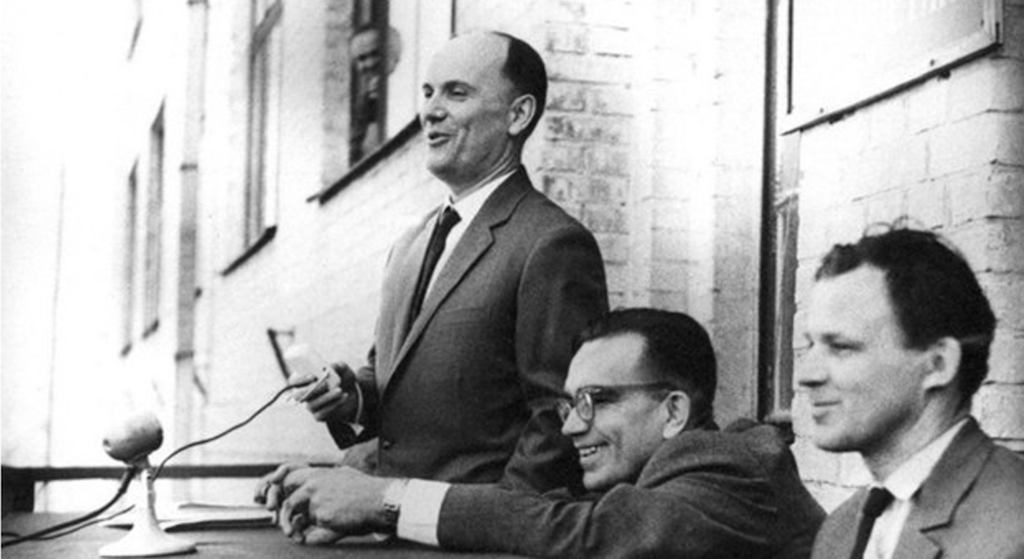
At the rally on the occasion of the award of V.M. Glushkov Lenin Prize
Glushkov was appointed supervisor of the Dnepr computer development project, and Malinovsky was appointed chief designer. The work was completed in record time, from the time of the idea of creating a universal control machine UMSHN in 1958 until its commissioning in 1961. At that time - it was a world record in development speed. In addition to this record, the Dnepr machine set another world record - industrial production, since it was produced for 10 years and exported to other socialist countries.
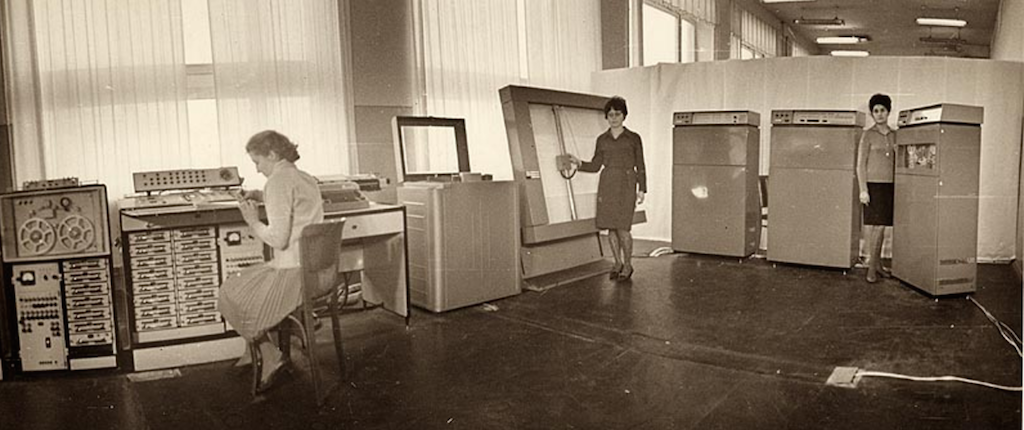
Computer "Dnepr"
Dnepr was the first semiconductor machine of domestic production with a two-address command structure and binary number system, the speed on addition, subtraction, and logical operations was 35 thousand operations per second, memory on ferrite cores, with a capacity of 512 words; data was entered using punched tape through a device based on the STA-2M telegraph apparatus. The machine was powered by a three-phase AC 220/380 V, 50 Hz.
In 1958, at the Institute of Cybernetics of the Academy of Sciences of the Ukrainian SSR, under the leadership of Glushkov, work began on the development of the predecessors of personal computers - the Promin computer, and later the MIR family of machines.
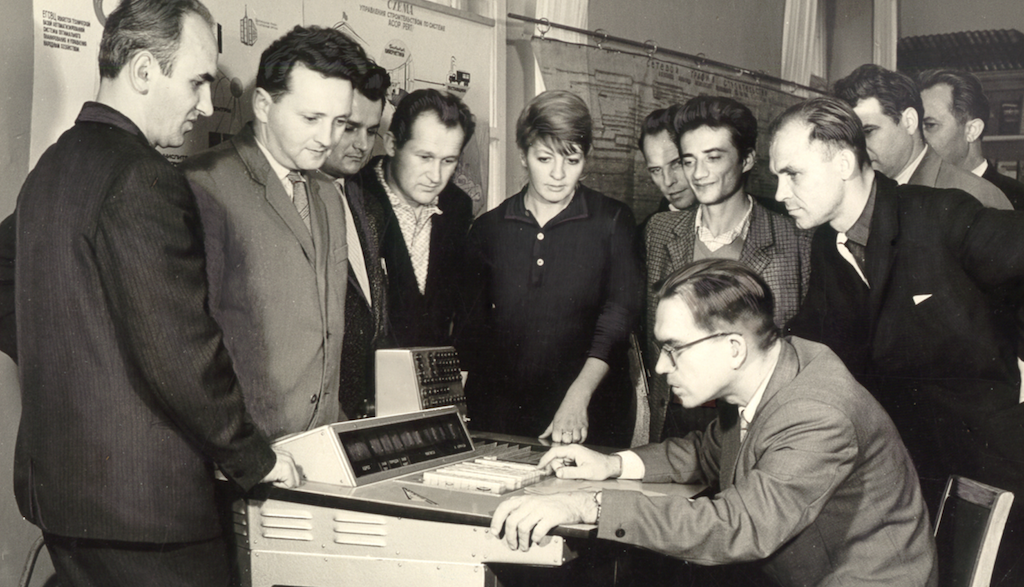
Promin
In the computer "Promin" was implemented a number of innovations. The computer was intended to automate engineering calculations of medium complexity in design bureaus and research institutes. It is characterized by ease of use, small size, low energy consumption.

The speed and memory capacity were smaller, with addition, the speed was 1000 operations per second. Promin, with a unicast command structure and decimal number system, was built on semiconductor devices. The machine entered mass production in 1963. The principle of stepwise microprogramming was first applied in it.
The MIR computer was also intended for engineering calculations; its dimensions made it possible to place it in a small room (16 square meters). Using an electronic typewriter with a wide carriage, the program was entered and the results were output, and the print speed was 10 characters per second. The speed of the computer when performing arithmetic operations on 5-bit numbers was 200 - 300 operations per second.
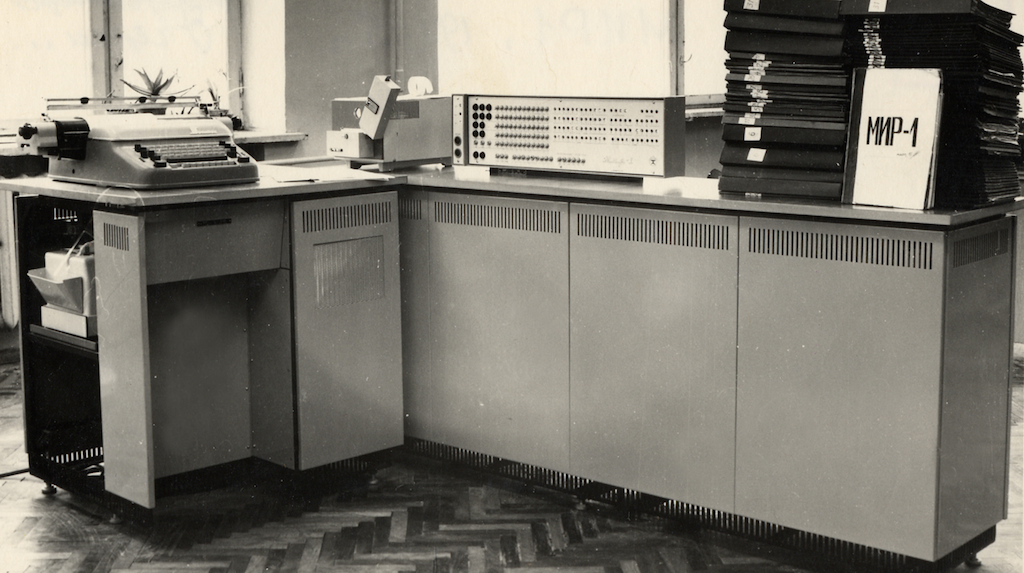
MIR-1
When developing the MIR series, Glushkov set a new goal - to bring the machine and the person as close as possible by creating a simple programming language. So the input language ALMIR-65 was developed. Later, in the following MIR-2, MIR-3 computer models, ALMIR-65 was transformed into the Analyst language. For the first time, a MIR-2 computer used a display with a light pen.
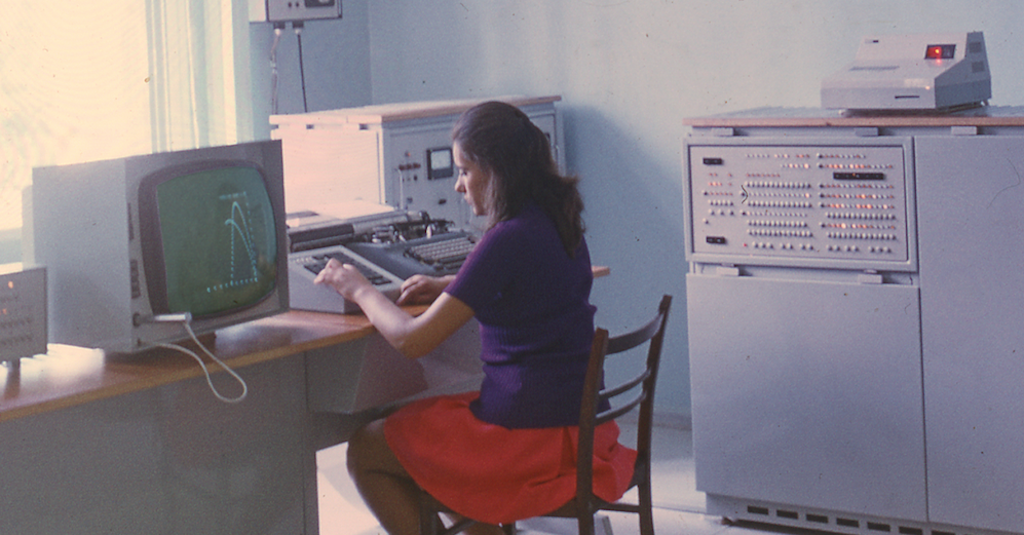
MIR-2

MIR-3
At the end of the 60s, under the leadership of Victor Glushkov, work began on the development of the Ukraine computer. Rabinovich was appointed chief designer. "Ukraine" was the next step in the development of computer intellectualization.
In 1968, Glushkov was awarded the USSR State Prize (as part of the team of authors) for the development of new principles for constructing structures of small machines for engineering calculations and mathematical support for them, implemented in MIR series computers.
A step before the opening of the world wide web and electronic money
“The future of management is connected with the transition to paperless computer science.”
The time has come with the provisional name of the "Khrushchev thaw", which replaced the totalitarian policy of Stalin. The Stalinist regime, its repressive policies were criticized and condemned.
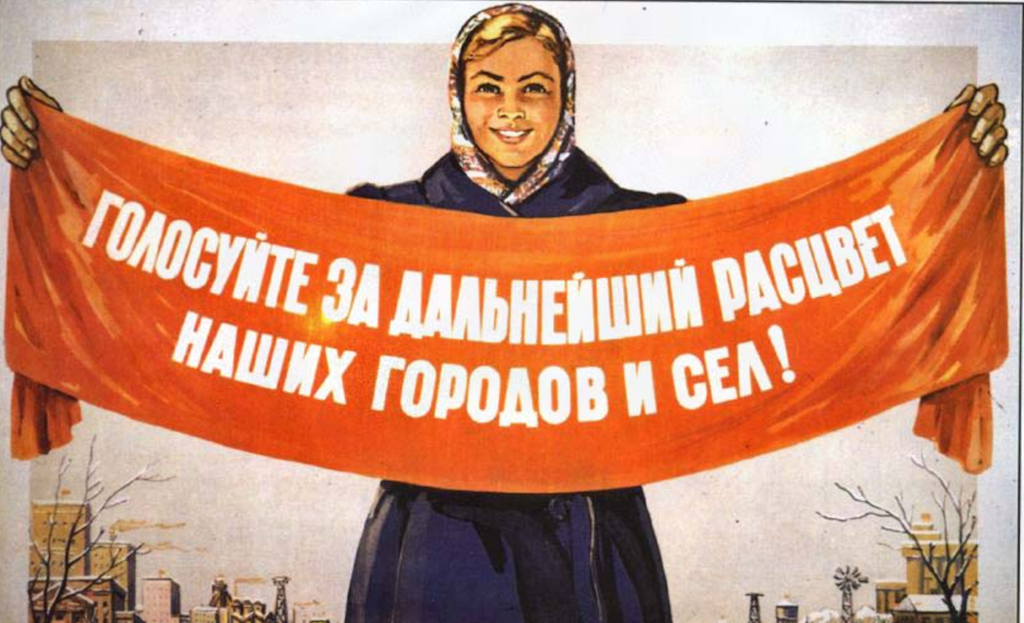
From 1953 to 1964, many social reforms were carried out, among them the solution of the issue of pensions, the increase in incomes, the solution of the housing problem, the introduction of a five-day week. These were difficult times. But in the vein of the article, we are interested in the economic situation. By the beginning of the 60s, the USSR was in a deep economic crisis, caused by the inconsistency of the reforms. In 1962, food prices rose by almost 30%, which caused a wave of indignation. The reasons for the failure were not openly discussed, but for many experts they were already more than clear.
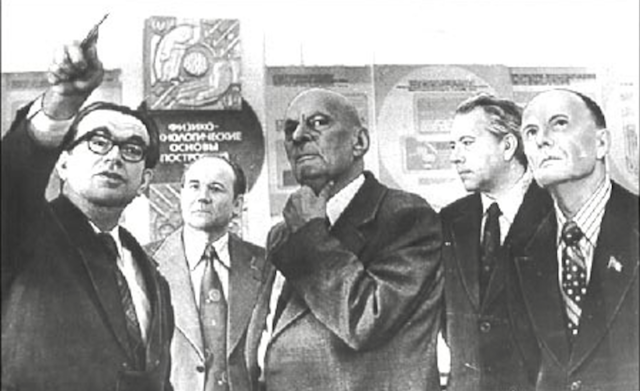
Glushkov proposed introducing a draft electronic system for analysis and planning of the state economy. Thus, already then making a prerequisite for the appearance in the USSR of electronic money! As Viktor Glushkov reasoned, the refusal of cash payments, roughly speaking, would allow honest workers to buy more goods for their electronic ruble than speculators for cash ruble. But such a successful control with the help of machines would be possible provided that only truthful information was provided about each worker. Such honesty in the source information was completely unprofitable for those who were at the helm of the power.
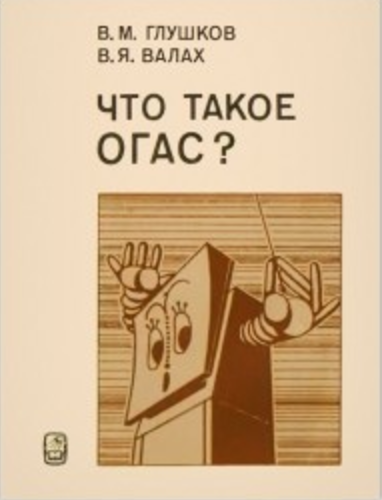
In 1962, Glushkov was given the task of constructing an OGAS (a nationwide state automated system for managing the economy). The first draft of the Unified State Network was developed, which included about 100 centers in large industrial cities, united by broadband communication channels. There were few issues that were related to the protection of information. It was supposed to be a two-tier system in which the main computer centers "... exchange information with each other not by switching channels and switching messages, as is customary now, broken down into letters, but I suggested connecting these 100 or 200 centers with broadband channels, bypassing the channel-forming equipment so that it would be possible to transfer information from magnetic tape in Vladivostok to tape in Moscow without slowing down.


the automation process was perceived in this way
Prior to this, such a system was not implemented anywhere, and the project itself remained secret until 1977. Glushkov developed a system of mathematical models for managing the economy, which made it possible to see regular flows of information, and he was also offered a non-monetary system. According to approximate estimates of Glushkov, the OGAS project could be implemented in 15 years, it would cost 20 billion rubles. Having covered industry, agriculture, trade, and ministries, the project would have paid off completely. It was also necessary to train personnel, release a number of computers, create and organize computer centers. According to Glushkov’s forecasts, if such a project was implemented, the profit would have amounted to 100 billion rubles. As Glushkov said, OGAS is much more complicated and more difficult than space and nuclear research programs combined, plus the scientist understood that that such a system will not leave aside the political and social aspects of society. But ... the idea was rejected. OGAS could challenge the West, where it was clearly understood that the implementation of such a system could develop a modern and efficient economy. Glushkov, being one step away from the creation of the World Wide Web, was criticized by government officials, was subjected to all kinds of attacks, the purpose of which was to throw his idea as far as possible and prevent its implementation. Glushkov took 20 long hard years to convey his idea of informatization and computerization of the country. being one step away from the creation of the World Wide Web, he was criticized by government officials, was subjected to all kinds of attacks, the purpose of which was to throw his idea as far as possible and prevent its implementation. Glushkov took 20 long hard years to convey his idea of informatization and computerization of the country. being one step away from the creation of the World Wide Web, he was criticized by government officials, was subjected to all kinds of attacks, the purpose of which was to throw his idea as far as possible and prevent its implementation. Glushkov took 20 long hard years to convey his idea of informatization and computerization of the country.
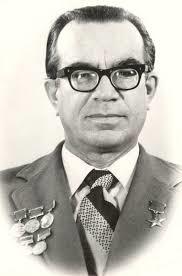
Academician Glushkov (in 1964 he was elected an academician of the USSR Academy of Sciences) became a legend during his lifetime, he was even called the God of Soviet cybernetics abroad. The Institute of Cybernetics of the Academy of Sciences of Ukraine enjoyed great authority; in the 60s and 70s it was even called the “Mecca” of cybernetics. There, various studies were carried out that affected computer science and technology, information networks, artificial intelligence. Computer technology developed in Ukraine was not inferior to the world level.
At the end of the 70s, Glushkov put forward the idea of a macro conveyor. Glushkov never saw the macro-conveyor computers EC-2701 and EC-1766 created according to his ideas, which, according to the State Commission, had no analogues in world practice and were the most powerful computing systems in the USSR.
Glushkov seemed to be talented in everything. In addition to mathematics, cybernetics, computer science and designing computers of new generations, he possessed excellent knowledge in the fields of philosophy, economics, history, literature and music. One of his talents cannot be mentioned - the talent of the organizer.
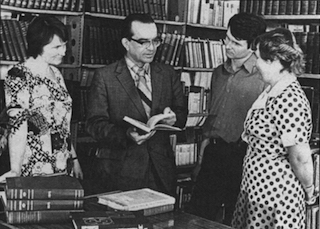
He was the legendary leader of the Institute of Cybernetics of the Academy of Sciences of the Ukrainian SSR, an excellent scientific leader of the entire ACS industry, organized faculties, departments in the field of cybernetics and computer technology at leading universities in the country, found time to give lectures to students, and created scientific schools. The funny thing is that at the beginning of his journey, Glushkov dreamed of living on a desert island altogether, away from people, devoting himself to science) Glushkov was an excellent orator: "... logically impeccably building his speech in front of an audience, he fascinated the audience with a flight of thought."
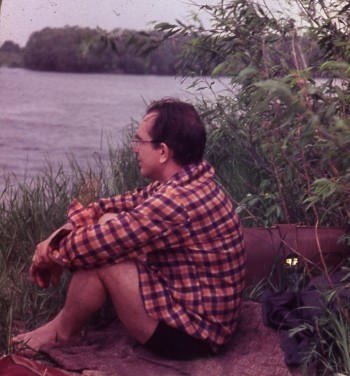
Victor Glushkov was an unpretentious person, as his family members recall, he could lead a Spartan lifestyle, luxury did not appeal to him. He was one of the pioneers of world computer science and cybernetics.
In the summer of 1981, Glushkov complained to his wife that he did not feel his left leg, he was bothered by constant headaches in the back of his head. Initially, doctors could not make an exact diagnosis to Glushkov. His condition was getting worse and worse. On January 7, 1982, the famous German neurosurgeon Professor Zulch, who personally came to Moscow, was given a terrible diagnosis - a tumor of the medulla oblongata, which at that time had already spread along the spine.

January 30, 1982 Viktor Mikhailovich Glushkov died. Having traveled almost the whole world, being invited by IBM executives to give lectures in the USA and occupy a high position in the field of research and development, Glushkov refused, he loved his homeland very much, and considered Kiev the most beautiful city in the world. This Great Man was buried in Kiev, on the central avenue of the Baykovoye cemetery.
History of cybernetics in Ukraine. V. M. Glushkov The
article was published with the assistance of the hosting provider ua-hosting.company. Therefore, taking this opportunity, we want to remind you of the action:
VPS (KVM) with dedicated drives (a full-fledged analogue of dedicated entry-level servers from $ 29) in the Netherlands and the USA for 1-3 months free for everyone + 1 month bonus for geektimes
Do not forget that your orders and support (cooperation with you) will allow you to publish even more interesting material in the future. We will be grateful for your feedback and criticism and for possible orders. ua-hosting.company - happy to make you happier.
